Frogmouths, captivating avian wonders native to Australia and Southeast Asia, defy conventional bird norms with their unique traits.
With a wide-mouthed appearance reminiscent of a frog, these nocturnal creatures boast unparalleled camouflage skills, seamlessly blending into their surroundings.
Observing them in their natural habitats reveals their elusive nature, requiring patience and keen eyes. Yet, beyond their camouflage lies a world of intriguing behaviors, from intricate mating rituals to unique nesting habits.
In this exploration, we embark on a journey to unravel the mysteries of the Frogmouth, delving into what makes this species a standout marvel in the realm of birds.
Physical Characteristics of Frogmouths
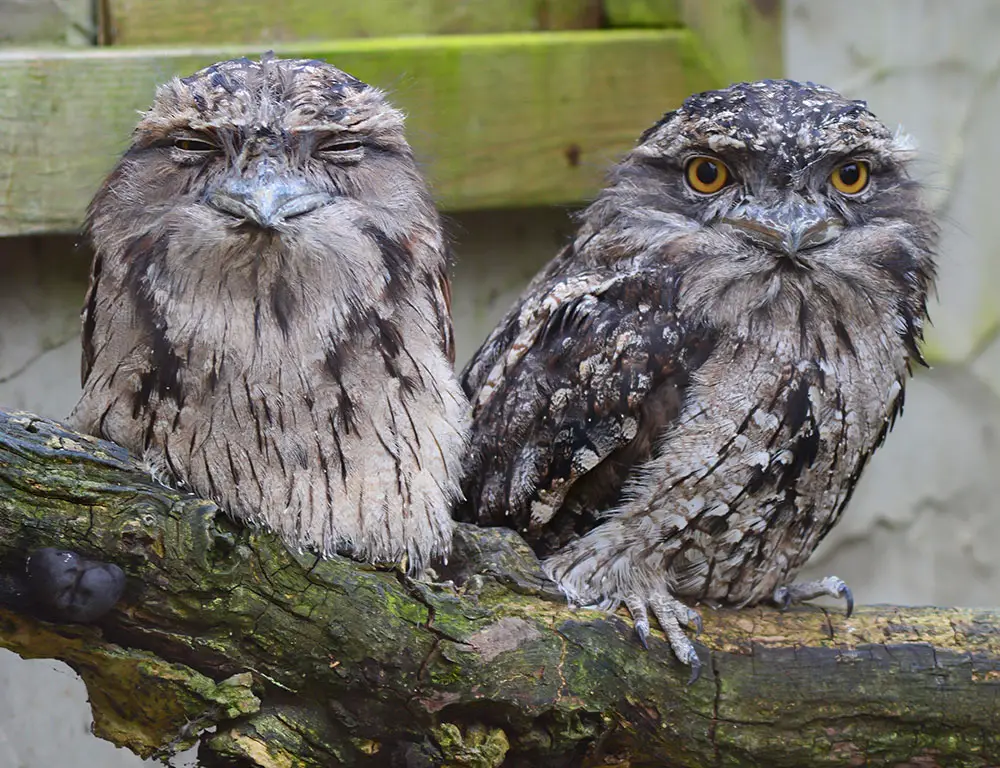
The Frogmouth is indeed a unique bird species, characterized by several fascinating physical attributes:
Wide and Gaping Mouth
The most distinctive feature of Frogmouths is their wide and gaping mouth, reminiscent of frogs, which gives them their name.
Size Variation
Frogmouths typically range from 9 to 21 inches, with variations depending on the specific species. Despite this range, all species share a disproportionately large head compared to their body size.
Plumage and Camouflage
They are covered in dense plumage, usually in shades of gray or brown, providing excellent camouflage against tree bark. This camouflage helps them remain concealed during daytime rest, offering protection from predators.
Additionally, their feathers often have longer bristle-like structures around the eyes and beak, enhancing their camouflage.
Short, Sturdy Legs with Sharp Claws
Frogmouths have short but sturdy legs equipped with sharp claws, allowing them to grip onto branches tightly while they sleep upright during daylight hours.
Broad Wings
They possess broad wings, which enable swift flight when hunting nocturnal insects and other small prey under the cover of darkness.
Large Yellow-Orange Eyes
Frogmouths have large, striking yellow-orange eyes, providing excellent night vision crucial for detecting movement even in low light conditions. This feature aids them in hunting and navigating their nocturnal environment.
Habitat and Distribution of Frogmouths
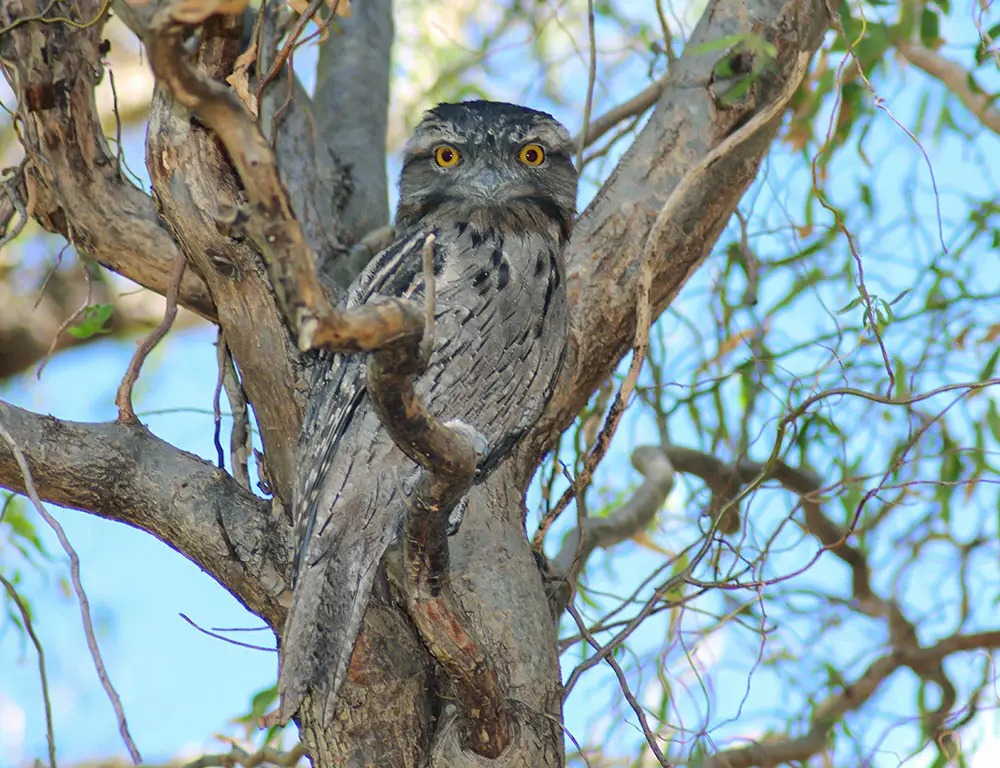
Frogmouths, with their remarkable camouflage and nocturnal habits, exhibit diverse habitats and distributions across Australia and parts of Asia.
Here’s a breakdown of their habitat preferences and distribution:
Tawny Frogmouth (Podargus strigoides)
- Habitat: Open woodlands and urban parks across Australia.
- Distribution: Found throughout mainland Australia, Tasmania, and some offshore islands like Kangaroo Island.
Marbled Frogmouth (Podargus ocellatus)
- Habitat: Rainforests and eucalyptus groves in eastern Australia and New Guinea.
- Distribution: Limited to northeastern Australia’s rainforest regions, with no presence on islands.
Papuan Frogmouth (Podargus papuensis)
- Habitat: Mangrove swamps around New Guinea.
- Distribution: Primarily found in coastal areas around Northern Queensland, with presence on some Torres Strait Islands.
Behavior and Diet of Frogmouths
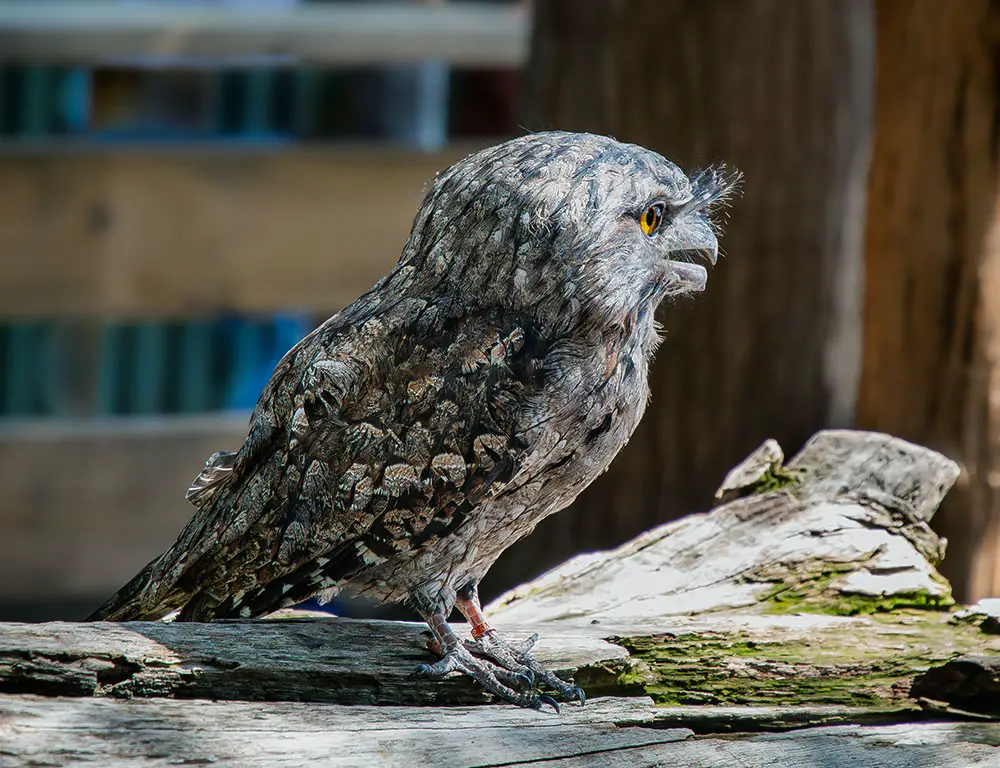
The Frogmouth, with its distinctive behavior and diet, is a fascinating subject of study. Let’s delve deeper into its behaviors and dietary preferences:
Nocturnal Activity
Frogmouths are primarily active at night, using their excellent camouflage to blend into their surroundings in open woodlands and forests.
Stealthy Hunting
Rather than employing dramatic swoops, Frogmouths rely on stealth to capture prey. They remain motionless on low branches, waiting for small ground-dwelling invertebrates to come within striking range.
Dietary Preferences
Their diet consists mainly of small ground-dwelling invertebrates, with insects forming the bulk of their food intake (around 70%). They also consume spiders (15%), worms (10%), and occasionally snails or slugs (5%).
Breeding Season Behaviors
- Monogamous Pairs: Once paired, Frogmouth couples remain together for life, demonstrating monogamous behavior.
- Shared Incubation: Both parents participate in incubating the eggs, sharing equal responsibility between the male and female.
- Division of Labor: During incubation, the male usually takes charge of feeding duties, ensuring the well-being of the female and future offspring.
Reproduction and Life Cycle of Frogmouths
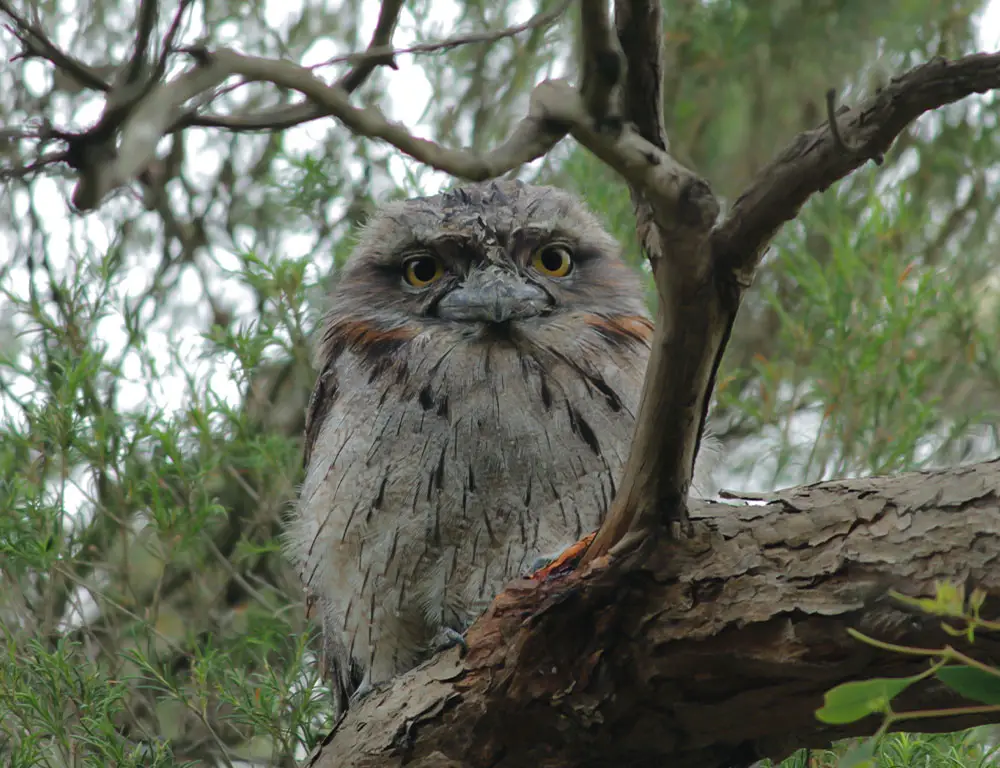
The reproduction and life cycle of the frogmouth, indeed, epitomize the marvels of nature’s ingenuity. From courtship to independence, each stage is finely tuned to ensure the survival and perpetuation of the species.
Courtship and Pair Bonding
Frogmouths engage in monogamous relationships, forming strong bonds with their chosen partners. The male demonstrates his commitment by actively wooing the female through acts of provision, often by feeding her until she is ready to mate.
This bonding ritual strengthens their partnership and establishes the foundation for successful reproduction.
Mating and Egg-laying
After courtship, the female lays a clutch of eggs, typically one or two at a time. This marks the beginning of the reproductive phase, where the pair’s commitment to each other extends to nurturing their offspring.
Incubation and Parental Care
Both parents share the responsibility of incubating the eggs for approximately 30 days. They tirelessly tend to the eggs during this period, keeping them warm and protected. This shared parental duty exemplifies the cooperative nature of frogmouths in raising their young.
Chick Development
Upon hatching, the chicks depend entirely on their parents for sustenance and protection. Despite their initial vulnerability, they rapidly develop, acquiring feathers within three weeks.
This remarkable growth underscores the resilience and adaptability of frogmouths as they prepare for life outside the nest.
Independence and Mate Selection
Around seven weeks after hatching, the young frogmouths become independent from their parents’ care. However, their journey does not end there. They return to their birthplace annually, demonstrating a remarkable homing instinct.
This behavior ensures familiarity with their surroundings and facilitates the eventual selection of a mate and the continuation of the reproductive cycle.
Conservation Efforts for Frogmouths
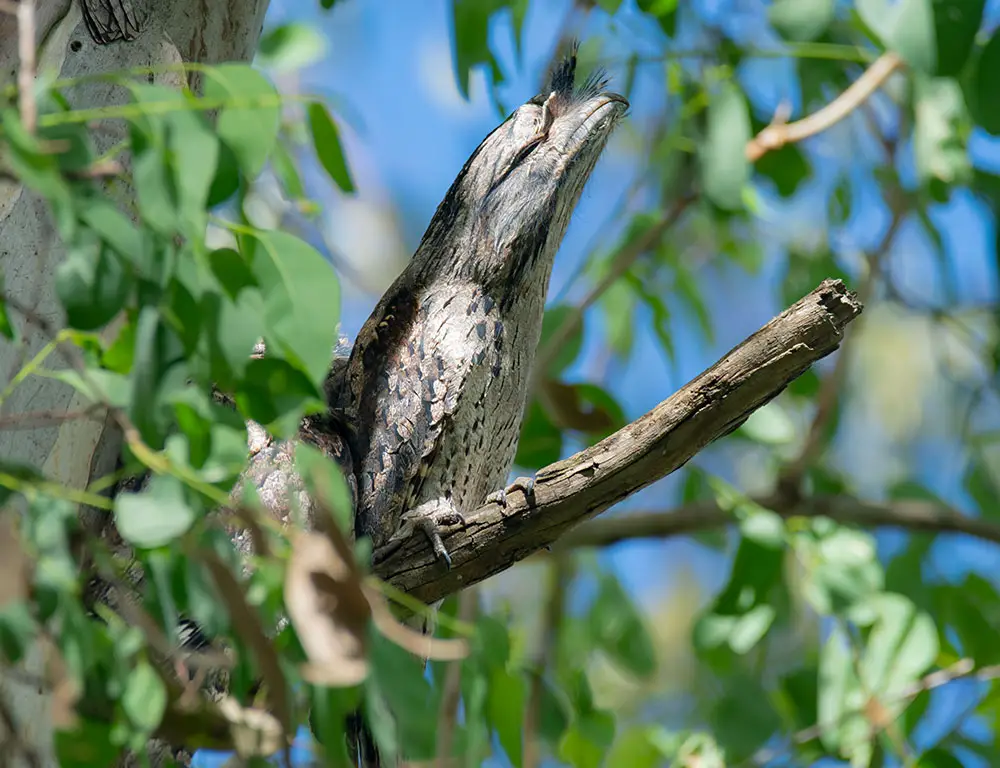
The conservation efforts aimed at protecting frogmouths are commendable and crucial for ensuring the survival of these unique birds.
Let’s break down some key aspects of these conservation initiatives:
Habitat Restoration
Organizations and individuals are actively involved in restoring habitats for frogmouths and other species. This consists of replanting forests and rehabilitating landscapes affected by human activities such as deforestation and development.
Promotion of Sustainable Forestry
Organizations like the World Wildlife Fund (WWF) promote sustainable forestry practices in regions where frogmouths are found, such as Southeast Asia. This helps in preserving and maintaining suitable habitats for these birds.
Local Conservation Projects
Groups like BirdLife Australia are spearheading conservation projects at the local level aimed at preserving native habitats for Australian frogmouth species. These projects focus on protecting critical habitats and raising awareness among local communities.
Community Education
Educating communities about frogmouths and their importance in the ecosystem is crucial to conservation efforts. People are more likely to appreciate and protect these birds and their habitats by raising awareness.
Captive Breeding Programs
While not ideal, captive breeding programs play a significant role in bolstering the population numbers of frogmouths. Zoos worldwide participate in breeding programs to increase population numbers before releasing individuals back into the wild.
Conclusion
Exploring the world of Frogmouths has been a captivating journey, revealing the unique traits and behaviors that set these birds apart in the avian kingdom.
Despite their owl-like appearance, they’re more closely related to nightjars a testament to nature’s fascinating adaptations.
Their mastery of camouflage allows them to seamlessly blend into their surroundings, granting them peaceful slumber during the day and efficient hunting at night.
Yet, their remarkable dedication to parenting truly impresses, with both parents sharing equal responsibilities in nurturing their young. Frogmouths exemplify a noteworthy partnership in raising offspring, from nest-building to feeding and defending their chicks.
Through this exploration, one gains a deeper appreciation for nature’s intricate complexities and diversity, making Frogmouths a truly captivating subject worthy of admiration.